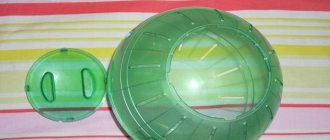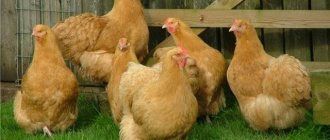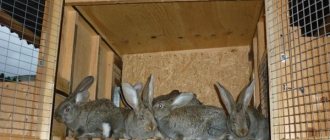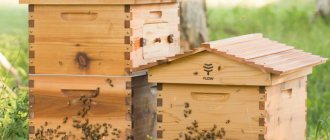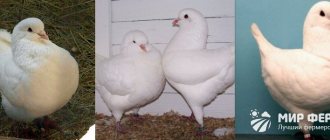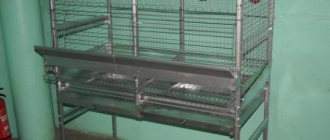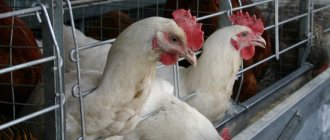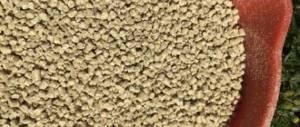A brooder for 60 chickens is a box of standard dimensions 100*60*50 cm. It is equipped with a tray for manure, stands on legs 15 cm high. The back and side walls are blank, the doors are mesh, with a wooden frame. There is one hole in the ceiling for the cable that powers the incandescent lamp. You can make a room for chickens yourself from available materials - plywood, fasteners. Considering that equipment in stores costs 6,000-10,000 rubles, a homemade brooder will cost several times less.
Criteria for selecting a finished structure
When purchasing a finished brooder, you should pay attention to the overall strength of the structure.
The frame must be strong and not “walking”, the lid fits tightly to the body. Particular attention is paid to checking the reliability of the insulation of lighting wires and heating elements. Chicks should not have access to the light bulb or wires, that is, the height from the floor to the lamps should not be less than 50 cm (situations are known when chicks pecked at a light bulb and it broke, littering the floor with fragments)
Chicks should not have access to the light bulb or wires, that is, the height from the floor to the lamps should not be less than 50 cm (situations are known when chicks pecked at a light bulb and it broke, littering the floor with fragments).
Be sure to read:
How to equip a chicken coop with your own hands?
Various elements are used as a heater: IR lamps, ceramic ones. The latter are the most reliable and economical. The installed thermostat will make it easier to maintain the desired temperature.
It is necessary to smell the materials from which the box is made. Sometimes plywood is coated with paint or varnish to protect it from moisture, which begins to emit a strong odor when heated.
You should avoid purchasing such a brooder; the chicks may be poisoned by the fumes.
What materials are best to use
It is quite difficult to decide on materials the first time, which is due to many different manufacturing options. To make a brooder, in most cases the following materials are needed:
- thin plywood up to 25 mm thick;
- timber measuring 30 x 30;
- mesh with grids 10 mm;
- metal or plastic tray;
- thermostat;
- fasteners;
- lamps.
To make the frame and main parts of the brooder, it is recommended to use thin plywood up to 25 mm thick and timber measuring 30 x 30. These materials will ensure structural stability and wear resistance, as they are not afraid of moisture and temperature.
For the walls of the brooder you can use fiberboard or chipboard. It should be taken into account that the wear resistance and density of these materials are relatively lower compared to plywood.
It is not recommended to make the floor surface a continuous covering, since in this case droppings and remnants of uneaten food will remain and accumulate on it over time. The best option is to use a lattice to make the floor. It should be noted that the younger the chicks are, the smaller the grid cells should be. The most commonly used grid is with a mesh size of 10 mm. The grid can be used to make the mesh part of the brooder door.
When food debris and droppings fall through the floor grate, they should end up in a special tray. A wooden tray is inconvenient to use, so to simplify the process of washing and cleaning, it is better to use a metal or plastic one. Some people use PVC panels as a tray.
Any brooder should be equipped with a thermostat that responds to changes in ambient temperature and adjusts the internal temperature of the chicks' room. The power and location of heating lamps in the brooder are calculated:
- depending on the desired size of the brooder;
- from the location of the structure;
- taking into account environmental conditions.
Infrared lamps of various types are popular.
How to warm a cage
For young birds, it is necessary to maintain the temperature in the first days of life at 30-32 °C (air humidity 55-70%), then it is gradually reduced to 20-22 °C.
Various options are used for heating:
- infrared lamps, they emit a luminous flux in which 80-85% of the radiation is warm light. As you move away from the heat source, the temperature decreases inversely to the square of the distance. That is, when removed by a factor of 2, the heat flux is dissipated by a factor of 4. Such heaters dry out the air, so to increase the humidity you need to place a cloth, part of which is in water;
- incandescent lamps 15-50 W. Their radiation consists of only 30-40% of warm infrared flux, but in practice they are easier to use inside a cell. A homemade chicken brooder with such heaters is easy to adjust. By reducing the supply voltage, the intensity of the heat flow is reduced;
- ceramic resistors with high heat dissipation are installed under the floor. The floor heating temperature is only 33...36 °C. Warm air will rise upward. This heating method is the most beneficial for chicks;
- Film heaters of the “warm floor” system are easy to use. The heat flow is dissipated over a fairly large area. The heater itself can be placed below, under the floor, or above - on the ceiling. The heating temperature is 40…45 °C;
- heating pad. It is packaged in a plastic bag and placed on the floor. Set the minimum heating mode, which gives a temperature of 32...36 °C, which is quite enough for any chicks: quails, ducklings, goslings and turkey poults.
The simplest method presented is to install incandescent lamps. They are located under the ceiling of the broiler brooder.
If you install several switches and minion sockets, then low-power light sources of 15-25 W are used. For an area of 50-60*30-35 cm, you will need to install all 4...6 lamps. When you turn on all of them at the same time, you can create a heat flux equal to 100-150 W.
A comfortable temperature inside the sleeping compartment can be maintained at negative temperatures outside.
It's quite easy to use a heating pad. Low cost and sufficient area make this heating source quite attractive.
How to keep
To prevent the occupants of the room from getting sick, provide them with air humidity of 60 to 70%. To maintain this level, promptly remove droppings and wet food, which release moisture into the environment. Excess dampness, an additional source of which is open drinking bowls, harms the health of the chicks. Excessive dry air also has a negative effect. Maintain appropriate humidity levels:
- ventilate the room;
- keep it clean, change the flooring regularly;
- install nipple drinkers of a size suitable for babies;
- Empty the water from the drip trays in a timely manner.
Chicks will be healthy if the brooder is kept clean.
To make the life of your pets comfortable, correctly calculate the area for the number of inhabitants. For 30-35 heads there is enough space in a device 120 cm long and 45 cm wide. Provide fresh air in the room, ventilate more often. However, avoid drafts - birds easily catch cold and die.
How to choose a brooder?
Basic principles of selection:
First . For a poultry farmer, one of the most important criteria that influences the choice is economic feasibility. Here we are talking not only about the presence or number of banknotes in the wallet, but to a greater extent it is worth taking into account profitability.
When will the chosen equipment pay for itself? How will its price affect the cost of a kilogram of chicken meat? What kind of barn would you have to build to install a brooder, and would there be enough space? Will it fit into an existing space? How long will the equipment last?
And perhaps the most important aspect: what to do with a chicken house if you decide that raising chickens is not your thing?
Second . The chicken house must be durable. Here we are not talking about a flimsy house that can be blown away by the wind! The roof of the house should not fall.
It is important that the floor is strong and can withstand the weight of bedding, equipment, the chickens’ own weight, which increases with age, and the weight of feed and water. And also the weight of the poultry farmer himself (sometimes you have to go into the house to clean and catch birds).
This last condition is not mandatory if we are talking about twenty chickens, and the rearing is supposed to be cage-based. For summer residents, teenage chickens usually roam their pens on their own.
Third . In the house you should :
- maintaining the desired microclimate;
- be fresh air, because birds are very fragrant creatures.
Shouldn't:
- blow from cracks;
- being too hot or cold;
- be temperature changes;
- be loud and scary.
Why are these principles important? Because with properly organized housing there will be rational feed conversion.
This means that all the food eaten will turn into meat and will be used for the growth and development of the chicken, and will not be lost for warming up or overcoming stress.
Fourth . The new term is planting density. That is, how many chickens and how long can they live on 1 m² without interfering with each other. It is important.
Indeed, if the quantity is incorrectly calculated, the following situations are possible: chickens peck at each other, die (poultry mortality), and their legs become sore. As a result, less meat will be obtained.
Fifth . The need to place various equipment in the house. There should be a place for it so that it helps the chickens grow and does not interfere.
We conclude: a house for chickens is not the same as a shed!
When the chicks turn into two-month-old (almost adult) birds, they will no longer need much of what is described. Because they will already be able to control their own body temperature, the temperature of drinking water will not be so important, and the temperature of the floor will not be so important.
Because the poultry house is the whole shed. In the area of the barn, the brooder is installed as a separate equipment, as a separate chicken coop, as a separate house.
It's profitable. After all, maintaining the desired temperature of air and water is easier and cheaper in a small enclosed space than in the entire volume of the barn.
Polycarbonate chicken brooder
Recently, homemade brooders made of polycarbonate have become especially popular. It is a lightweight, durable, transparent material that is easy to work with. In addition, manufacturing does not require a lot of polycarbonate, so this design can be considered cost-effective (Figure 8).
Despite some disadvantages, poultry farmers often use polycarbonate brooders due to their many advantages. One of the main advantages is that this material is very easy to wash and disinfect. Plus, it's strong and durable enough that you won't have to re-make your chick box.
You can make it for reusable use with your own hands. To do this, you will need wooden blocks to make the frame, 2 sheets of plywood or fiberboard 2 mm thick, which will act as walls, a mesh and tray for the floor, and a small sheet of polycarbonate. For internal equipment, you will need to stock up in advance with an infrared lamp (for heating the chicks), a thermostat, a foil reflector and a lamp for artificial lighting.
A classic brooder one and a half meters long can be made as follows:
- First you need to cut the timber into frame elements. You will need 6 pieces 142 cm long, the same number of pieces 44 cm long and 4 vertical posts 60 cm each.
- We connect the bars with self-tapping screws so that we get a finished frame. It should be taken into account that there are two levels of the frame at the bottom. The first should be at floor level, and the second should be 15 cm above it. The resulting internal space will be enough to install a tray for collecting litter.
- The mesh is attached to the second level of the horizontal level using self-tapping screws. It is advisable to stretch a wire under the mesh that will support the structure. If you do not have a whole piece of mesh of the required size, you can build a mesh floor covering from individual parts, but in this case you should keep in mind that under the place where the pieces join, you need to attach another piece of the block, which will prevent the floor from sagging.
- We cut out the walls, ceiling and bottom from plywood, fiberboard or OSB, and attach the ceiling part to the frame using self-tapping screws. It is at this stage that ordinary plywood can be replaced with polycarbonate. This material is easy to cut and easy to install.
Figure 8. Finished polycarbonate structures At the final stage, you need to make a door, sew it up with mesh, attach hinges to it and hang it on the structure itself. Then all that remains is to connect the heating and lighting devices, and you can move in the chickens. Despite the fact that the entire brooder can be lined with polycarbonate, experienced poultry farmers recommend using this material only for the bottom and front wall. This way, enough light will reach the chickens, it will be easier to clean and disinfect the interior space, but enough air will penetrate inside through the plywood walls.
Features of the design of a brooder for chickens
Beginning poultry farmers often use packaging boxes, crates, or other suitable containers that are at hand instead of a real brooder. These temporary solutions are easy and cheap, but cannot be used permanently:
- due to natural wear and tear of the structure;
- due to aging of the material;
- due to the inability to carry out high-quality disinfection and cleaning between batches of young animals.
In addition, cardboard or other temporary brooders resist drafts less well, cool faster, and are more difficult to establish the required temperature and humidity conditions, provide high-quality lighting and a removable tray for collecting litter. It is also worth considering that chicks constantly need water when growing, as well as wet food at first.
Considering all the pros and cons, the poultry farmer should take care of building a chicken cage with his own hands, which has an enviable margin of safety and is equipped with:
- adjustable heating system;
- lighting;
- feeders and drinkers according to the number of chicks in the brooder.
In addition, the structure should be easy to wash and clean, adequately withstanding both the residence of chickens and these mandatory procedures.
Making a box for a brooder
To make the chickens in the brooder as comfortable as possible, it is better to use wood materials for its manufacture. This could be plywood, treated boards or, for example, OSB boards. It is, of course, beneficial to use materials that remain after the construction or renovation of a house, barn, or other summer cottage.
First you need to decide how many livestock you plan to keep. If you want to raise several dozen chickens, you can make a multi-story brooder. In this case, it will consist of several boxes that stand on top of each other. At the same time, horizontal space is saved by using vertical space. Usually such a box is made closed on all sides. A plastic mesh is installed on the front wall for ventilation; pets can be clearly seen through it.
A similar mesh is also installed on the floor. Then the droppings, penetrating through its holes, fall into the tray fixed below. As a result, the chicks will be dry, the brooder will be clean, and care work will be much easier for the poultry farmer. For free access to the brooder, a door is also made on the front wall that can be opened at any time.
So, in order to make a brooder with your own hands, you will need:
- plywood 1 cm thick or OSB boards;
- bars;
- self-tapping screws;
- plastic mesh;
- metal corners;
- tools.
The approximate dimensions of a brooder for chickens are visible in the following photo. This can later be mounted on the outer wall of the barn if you raise pets in the summer in a region with a warm climate.
Approximate dimensions of a brooder for chicks. ferma-nasele
But you can make such a brooder for closed housing. The length of the device can be 1.5–2 m. The height of the structure is from 55 cm, and the width is from 60 cm. There are doors on the front panel.
If you are making a brooder for keeping chickens outdoors, you can open it using a sloping roof. It consists of two parts, which are fastened together with door hinges. At any moment it will be possible to lift part of the roof in order to make some manipulations inside the box.
If the space does not allow, the brooder can be made smaller. For example, the width is 60 cm, the height is 28 cm, and the length is 1 m. But chickens need to be housed in it in smaller numbers.
After you decide on the size of the structure, you need to prepare the materials. Wood boards or plywood are sawn into rectangles. You should end up with 3 rectangles of the same length that will become the back wall, roof and floor. In this case, the floor is made of plywood. Two small identical rectangles will become small sidewalls.
Now bars are attached to the edges of the rectangle, which will be the roof, along the perimeter. The same ones are fixed on small sidewalls, 2 pieces for each.
Then all that remains is to assemble the box, attaching plywood sheets without bars to the blanks with bars. The parts are fixed using self-tapping screws. Next, you need to make doors from bars covered with mesh, put them on the hinges, and fix them on the front of the box.
If you are making a brooder with a mesh floor, then you need to make the base of the floor from bars and form a side from the board at the bottom in front. Then the mesh is attached to the base of the floor using self-tapping screws. To prevent it from sagging, when making a wooden base, fasten it with additional short bars, placing them across.
Below the mesh floor there will be a plywood platform that slides out. Litter will accumulate here and is removed as needed.
A platform made of plywood that extends. My Life
To make the plywood last longer, it is coated with an antiseptic impregnation that is harmless to chickens, and during operation, paper, newspapers, or wood shavings are placed here.
If you use a mesh floor, then it will also provide ventilation. In this case, you can make doors from plexiglass. If the floor is wooden, then it is necessary to make holes for air access in the sides of the brooder.
Main characteristics
What is a brooder
A brooder for raising chickens at home is similar to a heated box. It can take up part of the room. The chicks will stay in it for several weeks. Until they grow up and get stronger.
Chickens typically spend two months here before being moved to a cage or communal coop.
The box can be used for several generations. Each time transferring the grown-up offspring to another home. Painting the wooden elements will help prolong the life of the structure.
Equipment and functions
Chick boxes are equipped with:
- drinking bowl;
- feeder;
- equipment for maintaining humidity;
- a heating device (in some cases it can also be a lighting device);
- lighting;
- ventilation holes;
- bedding for comfortable movement of chicks.
The key function of a brooder for chickens is to provide optimal temperature conditions for heating. In this way, conditions are created that are as close to natural as possible. When the chicks are close to the hen.
When the hen is not keeping the chicks warm, a special box does this successfully. If you make a brooder with your own hands, you can maintain the number of growing chickens.
Requirements
Since chickens live in a brooder after hatching, special requirements are placed on the device.
The floor here is dry, otherwise the bird will get sick. And also rough, otherwise the chickens may break their legs.
The brooder must be cleared of droppings in a timely manner so as not to contribute to the spread of diseases.
Since chickens are susceptible to temperature changes, it is necessary to think about how to organize heating.
The temperature is sufficient, but not high, so as not to overheat the bird. We will talk about this parameter separately below.
A litter box must be placed under the floor.
To avoid injury, the size of the mesh floor sections must be selected in accordance with the age of the bird. For very small ones, the cell size is 10 by 10 mm. As they grow older, a grid of 15 by 15 mm, 25 by 25 mm is used.
Ventilation is required, but without drafts.
Making a brooder for raising chickens with your own hands
Before you make a chicken cage with your own hands, it is important to calculate its dimensions, outline a diagram and prepare all consumables. The size of the brooder depends on the number of flocks being raised, as well as how long the chickens will be kept in such a comfortable cage
- a box for chicks with doors for access to the inside of the brooder;
- mesh bottom of the cage and a tray for collecting litter and other debris;
- box lighting and air heating system.
The work begins with cutting a sheet of plywood according to the completed drawings.
On the sides and back wall of the cage, strips of plywood or timber are used to make kind of guides for the lattice removable bottom.
To do this, prepare 4 strips of equal length for the side panels and two strips for the end. The length of such parts should be two centimeters less than the length of the brooder walls. The fastening of the lower planks is carried out along the edge of the walls, departing from the side sections by 1 cm.
When the lower strips take their places, strictly above them, at a distance of 3 cm, another strip is attached in parallel.
When building a brooder for raising chickens with your own hands, it is important to accurately maintain the distance between the parts of the improvised sled. Only in this case will the removable bottom and litter tray move without difficulty
Then, pieces of timber are attached to the sides, which are designed to play the role of stiffeners. The size of the bars is calculated so that their upper edge is flush with the edge of the side walls, and the lower edge is 3 cm higher than the top bar.
Now you can put all three sides together. The correctness of the do-it-yourself manufacturing and the drawings of the brooder for chickens is indicated by the complete coincidence of the grooves in the lower part of the structure.
The front panel is cut out of plywood, the parts are assembled according to the drawings, and hinges are attached to the sides of the frame for subsequent hanging of the doors.
Blind parts for two doors are cut out of a sheet of plywood according to the dimensions of the frame and screwed into place.
When all the parts of a do-it-yourself brooder for raising chickens are ready, you can begin installing the structure, which is completed by attaching two ceilings cut from the same sheet of plywood.
The brooder frame is assembled, but the work is not complete. Now you need to make a removable mesh bottom and a tray for receiving litter slightly smaller in size than the plywood bottom of the device. This is necessary for the free but reliable movement of the trays.
The litter tray is made similarly to the mesh bottom, only a light, hygienic plastic panel is used as the base.
A long, wide strip is attached to the front strip with self-tapping screws, covering the gap between the mesh and the plywood bottom. It prevents debris from spilling out and reduces the spread of poultry odor.
To make it more convenient for the poultry farmer to monitor the chickens and maintain the brooder, it is useful to make mesh windows on the front doors. To do this, use a jigsaw to select the central part of the plywood part.
A strong plastic mesh is attached to the resulting frame.
Lighting and heating
However, making a brooder for chickens with your own hands according to the drawings is not enough. For a comfortable stay for the chicks, they require a lighting and heating system connected to the electrical network.
When ready for chicks to arrive, the box is equipped with feeders, drinkers, thermometers to control living conditions, and then warmed up. If a large number of young animals are to be raised, multi-tiered chicken cages are built.
A video on how to build a brooder for chickens with your own hands using your own drawings will be a useful help for a novice poultry farmer who has decided to independently raise healthy, strong young animals.
Source https://www.glav-dacha.ru/bruder-dlya-cyplyat-svoimi-rukami/
Chicken brooder video
Share information about a do-it-yourself chicken brooder with friends and like-minded people, subscribe to our chicken news updates.
Good luck and prosperity to all chicken and rooster lovers!
See modern products for poultry and livestock farmers that improve the health of pets and make our work easier.
Alternative exit
Now let's figure out how to make a chicken box with your own hands. Even a beginner who does not know what a brooder is can cope with this task. And raising chickens for the first time.
Drawings for a chicken brooder will help you avoid assembly errors. On them you need to indicate the required dimensions of the parts to create the box.
Households have many DIY structures for raising chickens. At the same time, they are engaged in construction in all regions. Even in Moscow, where purchasing a finished product is not difficult.
This is not surprising, because a do-it-yourself chicken brooder takes into account all the features and nuances of their breeding. Which is not always present in ready-made designs.
The second advantage is budget savings. You can build a house for chicks from scrap or cheap materials.
How to make a brooder with your own hands step by step
Step 1.
Two sheets of plywood (or other material) are prepared. For example, measuring 1.5 m by 1.5 m. Both sheets are sawn exactly in half. One half needs to be cut into two more parts.
Thus, we get two squares measuring 0.75 m by 0.75 m (they will serve as side walls). And three parts 1.5 m by 0.75 m will serve as the back wall, bottom and roof.
Step 2.
Four strips are cut. These are guides that should be 2 cm smaller than the side walls, that is, 0.73 m each. They are then screwed to the bottom of the two side walls. So that one strip is adjacent to the bottom edge, and the second is higher by the width of the future pallet.
Two more planks are mounted to the side edges of these walls. One on each side. They will serve as a place for attaching the rear and front walls;
Step 3.
On the rear wall measuring 1.5 m by 0.75 m, similar guides are mounted in the lower part. They will serve to fix the pallet. Thus, when the two side and rear walls are fastened, a U-shaped guide for the pallet is formed.
Step 4.
The three walls are connected to each other using self-tapping screws. Then the door assembly begins. To do this, a frame is assembled from planks. Which should not reach the very top of the already assembled frame.
Metal hinges are attached to the sides of the slats, onto which pre-prepared doors are screwed. For example, frames of equal size. Plywood sheets can be used as door material.
Next, the frame is mounted to the overall structure using self-tapping screws. This way the doors don't go all the way to the top of the brooder. Leaving room for ventilation and inspection of the chickens.
Step 5.
The mesh bottom is assembled. To do this, wooden planks are twisted into a rectangle. And then a mesh is mounted on them. The dimensions must correspond to the internal area of the brooder! This will allow you to easily place the mesh bottom on the guides pre-screwed to the three walls.
Step 6.
By analogy with a mesh bottom, a tray for collecting litter is assembled. Only instead of a mesh, an easy-to-clean material is used. Don't forget about the environmental friendliness of the product.
The tray should also be slightly smaller than the internal area. This is to avoid getting stuck when removing. To prevent debris from flying out of the brooder? A screening strip is screwed perpendicularly to the front of the tray. The notora would cover all the holes and cracks;
Basic design requirements
A brooder is a vital structure for small chicks. It must meet a number of basic requirements, without which its use will be useless.
The brooder structure must have a floor. It must be extremely dry. Its surface should not slip. If this requirement is neglected, the chickens may get sick and die. If possible, a tray should be constructed to accommodate the waste. It must be located above the entire structure. The brooder must be cleaned regularly; there should be no excrement or other debris there. At the same time, it is not advisable to frequently disturb the young animals. This is especially true for individuals who are not yet 50 days old. The room must have high-quality and proper ventilation. But under no circumstances should there be drafts there.
Please note - newborn birds are incredibly sensitive to low temperatures, and this can end badly for them. It is important to maintain optimal humidity levels in the brooder - this is another requirement for these structures. This parameter should not be allowed to go beyond acceptable limits. The device that is responsible for heating the brooder must operate in such a way that the animals do not overheat
The heat source must be equipped so that the chicks cannot reach it. In the first days of life, the optimal temperature for chicks will be about 35 degrees. After a certain period of time, it will need to be reduced to 30 degrees. It is necessary to correctly adjust the dimensions of the brooder. Here, each poultry farmer himself calculates which parameters will be optimal. Much depends on the materials used in the manufacture of the brooder. The average dimensions of this structure are 1.5 by 1.5 m. The permitted density of chickens per square meter should be no more than 25 individuals. A standard design usually accommodates approximately 50-80 one-day birds.
Making your own brooders
For fifty or more chicks, you will need to make a structure measuring 100x50x50 cm. It can contain no more than fifty heads of broilers, and much more quails.
Plywood manger
For the construction of the dimensions above, you will need the following materials:
- one sheet of plywood measuring 150x150 cm and 1 cm thick;
- loops - 4 pieces;
- rail with a cross section of 50x15 mm;
- screws or nails;
- sheet of tin, oilcloth or plastic panels for the pallet;
- plaster mesh for doors;
- fork – 1 piece;
- reflector;
- infrared lamp 40 or 60 W – 1 piece;
- Dimmer;
- cartridge;
- cable of the required length.
Having prepared the materials and tools, you can begin making a brooder for chickens with your own hands.
Manufacturing stages:
- A piece measuring 50x150 cm is cut from a sheet of plywood and sawn in half. These will be the side walls, the size of which should be 50x50 cm.
- The remaining large piece is sawn into three equal parts, which will be the bottom, back wall, and top of the structure.
- All walls are fastened together.
- Now you can start making a tray for excrement and a floor, for which two frames measuring 98x49 cm are made from lath.
- The bottom of the pallet will be a sheet of plywood 100x50 cm, which is nailed to one of the frames.
- To make it easier to remove excrement, the bottom of the tray is lined with film.
- Above the installed pallet, slats are attached to the side walls. They will support the floor.
- The bottom of the floor will be a galvanized mesh, which is attached to the prepared frame. To keep the chicks warmer in the brooder, the mesh is lined with newspapers.
- Doors measuring 45x31 cm are made of lath, which is sewn with plaster mesh.
- The slatted frame is hung on the front wall using door hinges.
- If necessary, latches are attached.
- A hole is cut in the ceiling into which the cable is threaded, and a cartridge is installed.
- A plug and a dimmer are installed on the outside.
- A thermometer is attached to the rear wall of the structure.
- A light bulb is screwed in and a reflector is installed on it. In this case, the chicks will have a space with higher and lower temperatures. If they get cold, they will sit under the reflector, and when they get hot, they will go to the other end of the brooder.
The hand-delivered brooder is ready for the babies to move in. If desired, it can be painted. And by making two more similar designs and placing them on top of one another, you can get a spacious and convenient battery. It will be possible to keep chickens of different ages.
Brooder with glass lid
With your own hands, you can make a structure with a glass lid that will be heated with hot water. It is more suitable for the summer period, when during the day the chickens will bask under the rays of the sun, and during cold weather and at night - near the closed part of the manger.
Necessary materials:
- standard materials for making a long box or a ready-made suitable container;
- organic glass;
- canister;
- self-tapping screws;
- mesh material;
- metal loops;
- pieces of fabric.
Stages of work:
- Mark two segments in the assembled box.
- Make double walls in the closed part 15 cm above the floor.
- Nail the canister holders to the wall.
- Make a frame of appropriate size from slats and insert glass into it.
- Install holders for the frame in the open part of the structure, choosing the angle of inclination in advance.
- Using hinges, attach the frame with glass to the slats located above the double wall.
- Attach the side door to its hinges.
- Make a ventilation hole with a mesh in one of the side walls.
- Fill the space between the walls with insulating material, such as rags and sawdust.
- Install the lid and hang the screen between the two segments.
- Attach a canister of water to the holders, cover it with cotton wool and cover with a lid.
Your homemade brooder is ready. It will need to be regularly replaced with hot water.
Frame nurseries
This simple design will be convenient when caring for chicks. The materials for its manufacture are the same as for a manger made of plywood, only you will need more slats or bars.
Manufacturing stages:
- The frame for the upper and lower parts of the structure is assembled from the bars.
- Side slats are installed between the frames, resulting in a frame.
- The sides, back and floor are made from sheets of plywood.
- The top and bottom in the middle of the structure are connected by a block.
- The brooder is assembled using nails and screws.
- A mesh is attached to the front.
- Four bars installed on the sides will serve as legs.
- Doors are cut out of plywood and attached to the top using hinges.
- If necessary, valves are installed.
The homemade structure is equipped with lighting, ventilation and a thermometer.
Instructions for making and arranging it yourself
Having minimal carpentry skills, making your own brooder will not be difficult . It will cost several hundred rubles cheaper.
Preparation of tools and materials
Having minimal carpentry skills, making a brooder with your own will not be difficult.
The master needs to decide what materials he will use to build the brooder.
The simplest and most inexpensive “house for chickens” is a box: three walls are made of wood (plywood, OSB), and the fourth is made of transparent plastic.
The floors are mesh, the tray underneath is made of plastic or metal (galvanized iron, stainless steel).
Some poultry farmers adapt old cabinets and chests of drawers to keep chickens . But it is necessary to take into account that the chipboard from which old furniture is made quickly absorbs moisture and collapses. Brooders made from these materials are difficult to clean.
Tools you will need for work:
- sheet, pencil, ruler for drawing drawings and marks on the material;
- hand or electric saw;
- hammer or screwdriver (screwdriver);
- sandpaper number 80;
- nails, screws;
- pliers, wire cutters.
Brooder from the drawing
Some poultry farmers adapt old cabinets and chests of drawers to keep chickens.
Having decided on the size and type of construction of the future room for chickens, they draw on paper the types of construction - from the side, from the top and from the end.
Draw all the necessary details of the brooder:
- frame made of a wooden block or metal corner;
- method of attaching the walls and floor to the frame (how many nails or screws are required).
Separately, prepare a drawing of the brooder cover with a built-in lighting and heating system.
Based on the pictures, they calculate the amount of materials required, making a reserve in case of errors in the calculations.
How to assemble a brooder
When all materials are prepared and cut, assembly begins.
- The frame is assembled , the bars or corners are tightly pulled together. If the length of the box exceeds 160 cm, it is necessary to additionally install a tension cross bar between the bars.
The frame is being assembled
- The mesh floor is attached . If the mesh is plastic, so that it does not sag, wooden slats and steel strips are attached under it every 25 cm. The metal mesh does not require additional reinforcement.
A stationary or retractable tray is installed under the floors. For ease of cleaning, the distance between the floors and the tray should not be less than 8 cm. The non-removable tray is made with a slight slope towards the outside. Remove droppings with scrapers, raking them into substitute containers.
The mesh floor is attached
- The walls are attached to the bars using screws or nails . Make sure that there are no protruding ends of nails left inside the structure.
Attach the walls to the bars using screws or nails
- Assemble the cover and install the lamps and heating.
- The inside of a wooden brooder is whitewashed with lime or impregnated with a special odorless moisture protection agent.
Be sure to read:
How to equip a chicken coop with your own hands?
The brooder does not have to be made with access to the chicks from above. It is possible to provide a door in the front wall, but practicing poultry farmers argue that this is not so convenient.
Babies may jump out when the door is opened; This will not happen when you remove the cover from above.
Recommendations for making a feeder and drinker
Buy feeders ready-made, made of plastic or stainless steel.
Modern poultry farmers use dry feed to feed day-old chicks. Boiled eggs and cereals are rarely used due to the need to wash feeders after giving food.
For dry food, troughs with cross bars are suitable so that the chickens do not throw out the food with their paws. Dimensions of feeders: width 6-8 cm, length up to 40 cm.
Feeders are purchased ready-made, made of plastic or stainless steel. You can make it yourself.
The simplest options:
- from plywood;
- from a plastic bottle: 3-4 cm windows are cut in a container placed on its side.
There are bunker feeders on sale for bulk feed that can be filled once every few days.
For wet mash, it is better to use plastic or ceramic deep saucers, as they are easy to clean.
A chicken drinker can be constructed from a simple jar with a special lid with a hole and a groove. The jar filled with water is turned over and placed on the lid.
Through the hole, water fills the lid groove, from where the chicks can drink.
Nipple drinkers are popular among poultry farmers.
A water tank is suspended from the outside of the brooder, nipples (one for 5 birds) are distributed inside the box on the walls. The height of the attachment of the nipple spout should be at the level of the backs of the chicks.
If it is impossible to buy a ready-made drinker, you can make it from a plastic bottle.
For day-old chicks, the light should be on in the house around the clock
It is more convenient to take large 5-liter containers with a wide bottom or use a plastic canister.
At a height of 5 cm from the bottom, windows 4x3 cm (height) are cut around the entire circumference of the bottle. To prevent the sharp edge of the cut from injuring the chicken, it is isolated with adhesive tape.
Water is poured so that it does not reach a few millimeters from the window. The drinker is placed in a box and a couple of chickens are taught a lesson by forcefully dipping their beaks into the water. Soon the kids will figure out where the water is.
Lighting, heating and brooder temperature
For day-old chicks, the light should be on in the house around the clock. During the course of a day, small chicks come up to the feeders up to 20 times and peck at the feed and drink water.
They begin to arrange a “night” for chickens from 12-14 days, turning off the lighting for 2-3 hours, gradually increasing the darkness to 7-8 hours.
The lighting should not be too bright; one 40-watt light bulb is enough for a standard brooder 150 cm long. The socket for the light bulb is mounted in the lid of the box in a cut hole.
The cable is located outside. It is convenient to plug in a lamp via a dimmer, having the ability to change the brightness of the lighting.
If the brooder with chickens is located in a warm room, there is no need to install an additional heating element. The heat from the light bulb will be enough.
Be sure to read:
How to get rats out of a barn: effective methods of control using folk remedies and chemistry
The chickens in the brooder are heated using IR lamps, incandescent lamps, film heaters, and ceramic elements. In domestic conditions, IR lamps (red lamps) or heating film are used.
Correctly place the heating in the brooder lid. Sometimes the heating film is hung on the wall of the box with the chicks.
Important! Wires, switches, dimmers should not be within the reach of chickens! Heating elements must not be attached without insulating them from the brooder frame.
To accurately determine the temperature, a thermometer is hung in the chicken house. The normal temperature inside the brooder for chicks aged 1-6 days is +33 degrees. Then every week the temperature must be reduced by 6-8 degrees.
When installing heating in the chicken coop, you need to move it to one corner of the brooder. This creates a cool zone in the opposite corner and the chickens themselves can move to that part of the structure where they are more comfortable.
How to temporarily replace the brooder?
If the chickens are already on hand, and it takes some time to make a “house” for them, the breeder has to decide the issue of their temporary placement. To do this, you can use a box from household appliances, which will only need to be slightly modified:
- Insulate the bottom so that it is non-slip. To do this, it can be covered with 2-3 layers of gauze or a sheet of corrugated cardboard.
- Cut a viewing window in the wall of the box at a convenient height, and then tighten it with transparent plastic film. This will allow you to look at the chicks at any time without opening the box or disturbing them.
- Create a heating and lighting system in the box. To do this, you can use a liter jar with a screw-on metal lid. On its inner surface, you need to fix a small metal socket with bolts and screw in the light bulb. It is advisable to install a non-flammable gasket, for example, textolite, between the cover and the cartridge. To ensure air exchange inside the jar, the lid should be pierced several times. Next, fill the container 1/3 with fine sand, and wrap the bottom with a cloth or put a thick sock on it, otherwise the chickens may get burned.
You can buy a brooder in a store for 6,000-10,000 rubles, or you can make it yourself using ready-made drawings and available materials. After assembly, it will need to be equipped with an incandescent lamp, feeders and drinkers. If you have a large flock to raise, you can build multi-tiered chicken cages.
What it is?
A chick brooder is a box, box, or part of a room that is designed to house chicks during the first weeks of their lives. This design should completely replace the mother hen for babies and perform her heating functions.
It is not difficult to make such a structure with your own hands. The main thing is to understand the general principle of operation and take into account all the basic requirements. If everything is taken into account, then you can make a brooder from any available materials, even from cardboard boxes.
How to make a brooder with your own hands
There are many ways you can make your own brooder. If you want to build a structure, you need to prepare materials, tools, draw up drawings and act according to one of the proven methods. The main requirement is that favorable conditions for raising chickens be created inside the finished building. The use of crates, containers and boxes for keeping young animals is not recommended, since it is difficult to create a suitable environment in them.
Preparation of materials and tools
To carry out the work, you will need to prepare a standard set of tools and materials. Depending on the chosen method of constructing a brooder, the need for some tools may disappear. It is recommended to prepare the following equipment:
- circular saw or jigsaw;
- roulette;
- hammer;
- screwdriver;
- pliers;
- nails, screws, self-tapping screws;
- felt-tip pen for marking.
Construction stages
When making a brooder, just follow the step-by-step instructions. A common construction option involves performing the following steps:
- First of all, a timber frame is constructed. The easiest way is to make a base for the upper and lower areas, and then connect the elements using perpendicular beams.
- Jumpers made of timber are attached to the bottom and top of the frame.
- Blanks for walls and floors are cut from plywood sheets. The parts are attached to the frame using screws and nails. The front wall is covered with mesh.
- The legs are prepared and secured to the frame with fasteners.
- The upper doors are made of plywood. To do this, cut out a section of suitable dimensions and fasten it with loops on the frame. The design can open like a chest or have 2 doors.
- A mesh divided into cells is laid inside the structure, and lighting and heating devices are installed.
Lighting and temperature conditions
In the first days of the chicks’ life, the ambient temperature should be maintained at 30-32 degrees, then gradually lowered to 20-22 degrees. Heating and lighting inside the brooder can be done using infrared lamps. Lamps emit light and dissipate heat. The disadvantage is that the air dries out, so you will need to put a cloth soaked in water inside and maintain the humidity between 55-70%.
You can also use standard 15-50 W incandescent lamps for heating. A brooder with such heaters is easier to regulate even without installing a special thermostat. The heating level and lighting intensity are controlled by reducing or increasing the supply voltage.
Brooder setup
In addition to heating equipment, additional elements need to be installed in the brooder for birds. Even the simplest design should be equipped with ventilation to circulate fresh air and eliminate unpleasant odors. Also an integral part of the device are feeders and drinkers, which are recommended to be equipped with LED lighting that functions in the dark. Deep containers should not be used as drinkers, as chickens may choke in them. The best option is nipple drinkers with a built-in drip catcher.

